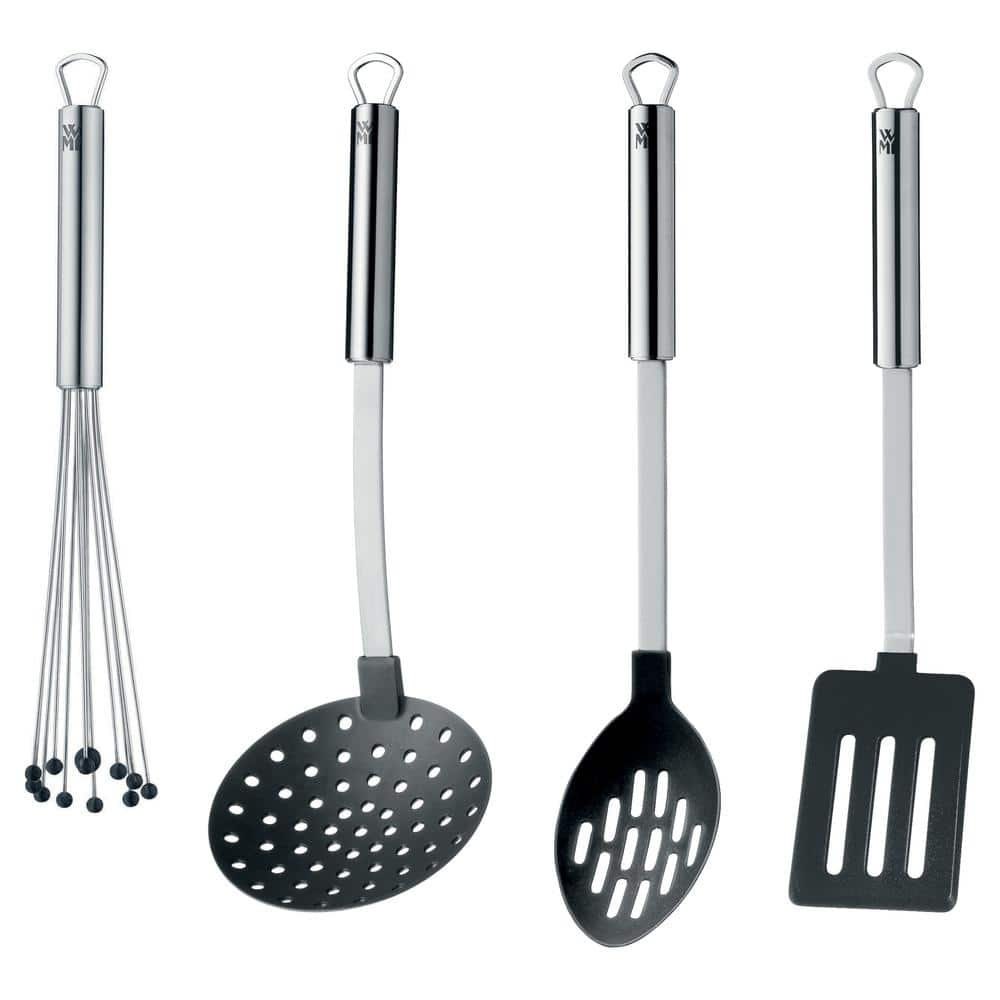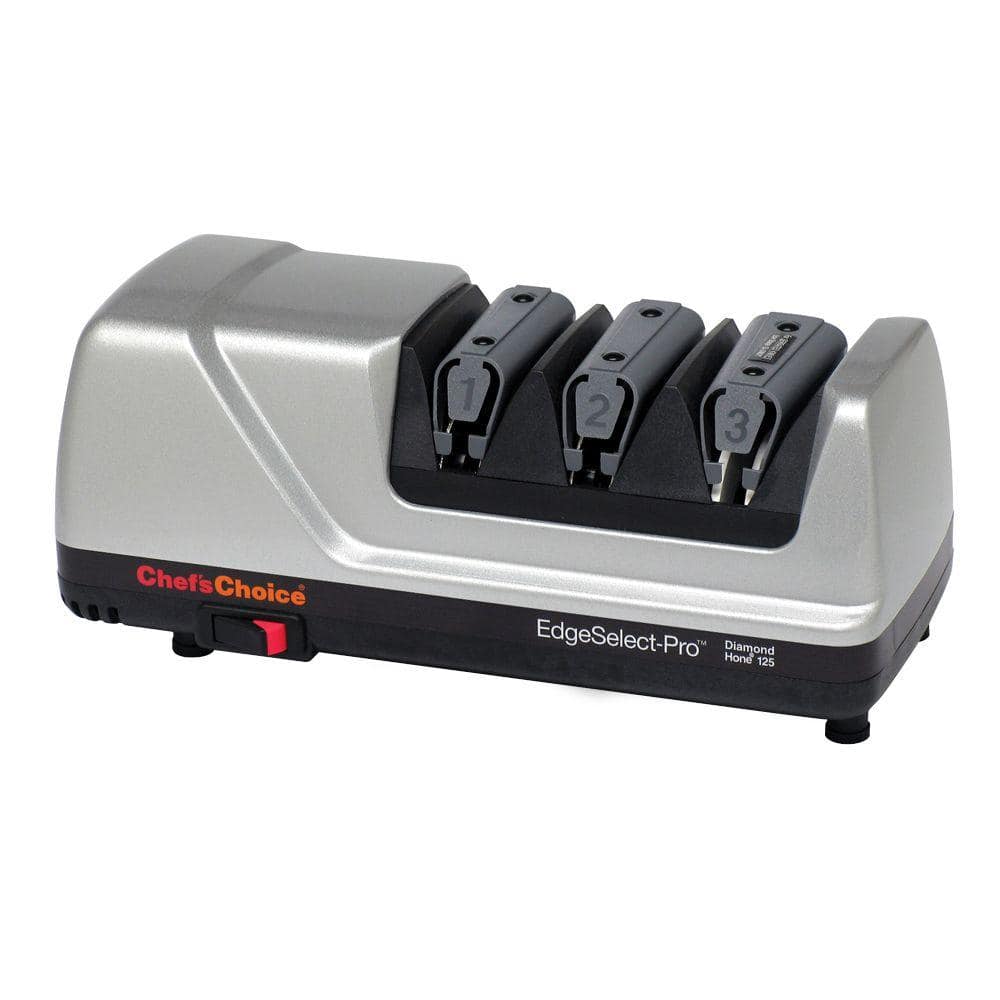The Best Kitchen Shears for All of Your Cooking Needs

Last updated September 7, 2023
The best kitchen shears are game-changers. Many home cooks overlook these essential tools. Instead of struggling with a chef’s knife for every cutting task, invest in shears.
In this guide, we'll go over kitchen shear uses, types and features to look for. We'll also help you understand the difference between shears and scissors. And to keep them long-lasting, you'll see how to sharpen and clean kitchen shears.
Table of Contents
Kitchen Shear Uses
Kitchen Shears vs Scissors
Kitchen Shear Construction
Kitchen Shear Materials
Kitchen Shear Handles
Subcategories of Kitchen Shears and Scissors
Kitchen Shear Uses
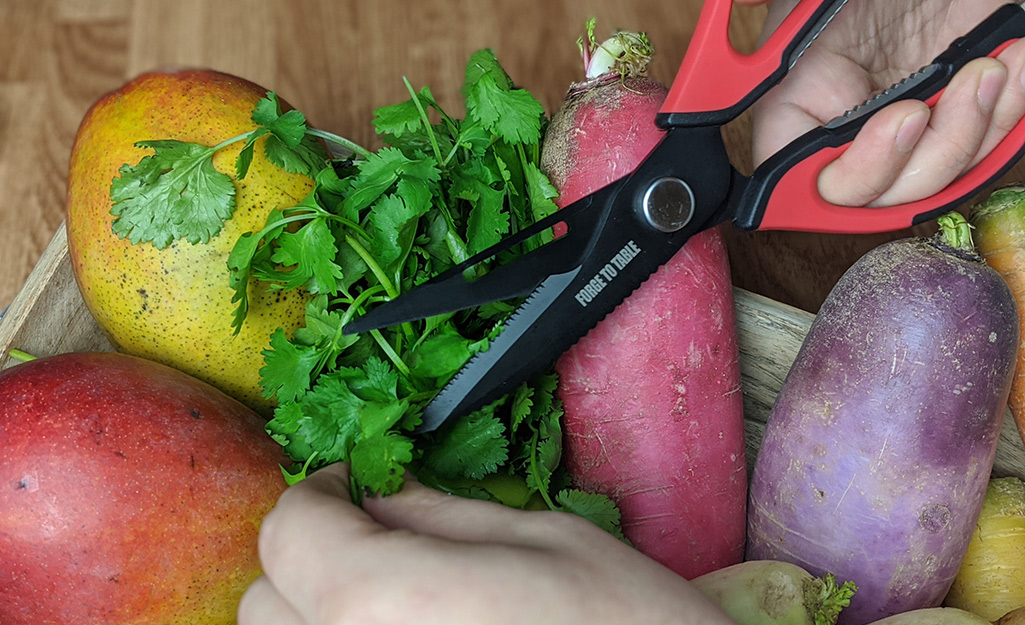
Kitchen shear uses are vast. They deftly cut through delicate herbs and small vegetables. Yet they give the necessary leverage to cut tough foods, like a whole chicken. A tough piece of beef, raw or grilled, is no problem for the best kitchen shears.
Kitchen shears are great for cutting things that aren’t food, too. Examples are parchment paper, vacuum-sealed packages, flower stems — you name it! Just remember, many non-food items feature tacky substances. Tape adhesive or flower sap can reduce your kitchen's cleanliness. Because of this, we recommend keeping a separate pair for these tasks.
We’re big fans of tools that make a slew of tasks that much easier. The fact that kitchen shears accomplish this with such a small, simple frame is a dream. Many knife sets come with a pair of shears. But it’s worth knowing the other types of kitchen shears available for purchase. This ensures you outfit your kitchen appropriately.
Tip: Look for kitchen shears that offer special features. Models with rotary features help open lids or crack nuts. Some models also have a built-in bottle opener.
Kitchen Shears vs Scissors
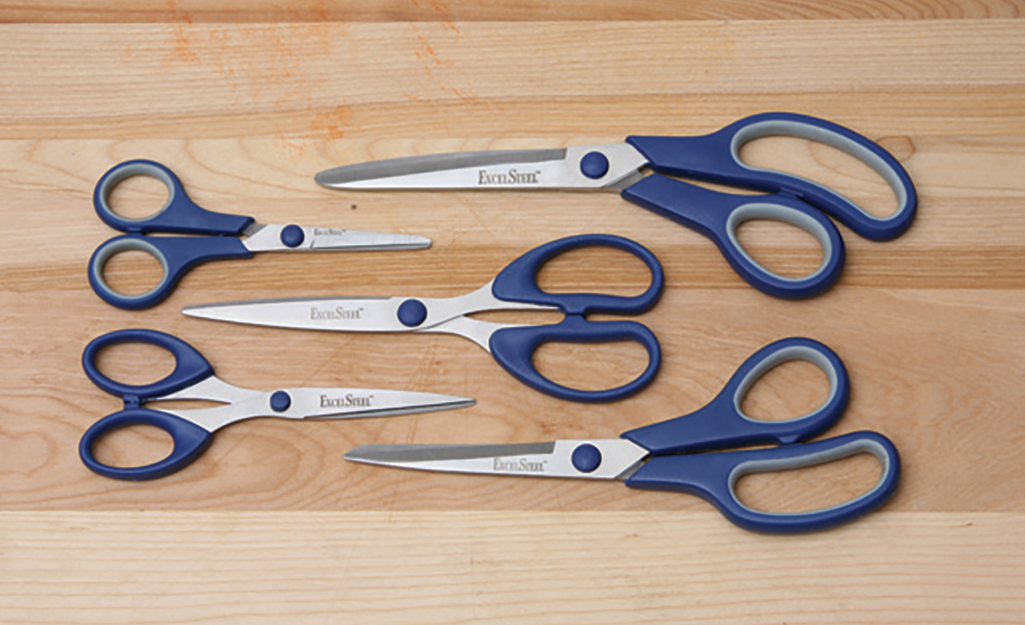
First off, we should address the kitchen shears vs. scissors point of confusion. Both kitchen shears and kitchen scissors have two blades. They both have handles that operate the opening and closing of those blades. The first difference between the two are the shape and size of the handles. The second difference is the length of the blades.
Scissors have handles that are equally sized with symmetrical loops. Shears have a bottom handle that is larger and more oblong. Scissors have blades that are about 6 inches or less. Shears have longer blades.
The fulcrum, or blade pivot point, on shears is farther from the handle. This allows the shears to give you more leverage. With their long, graspable bottom loop, this makes kitchen shears operate with more force. This feature comes in handy when you’re trying to cut thick, tough or slippery foods.
Kitchen Shear Construction
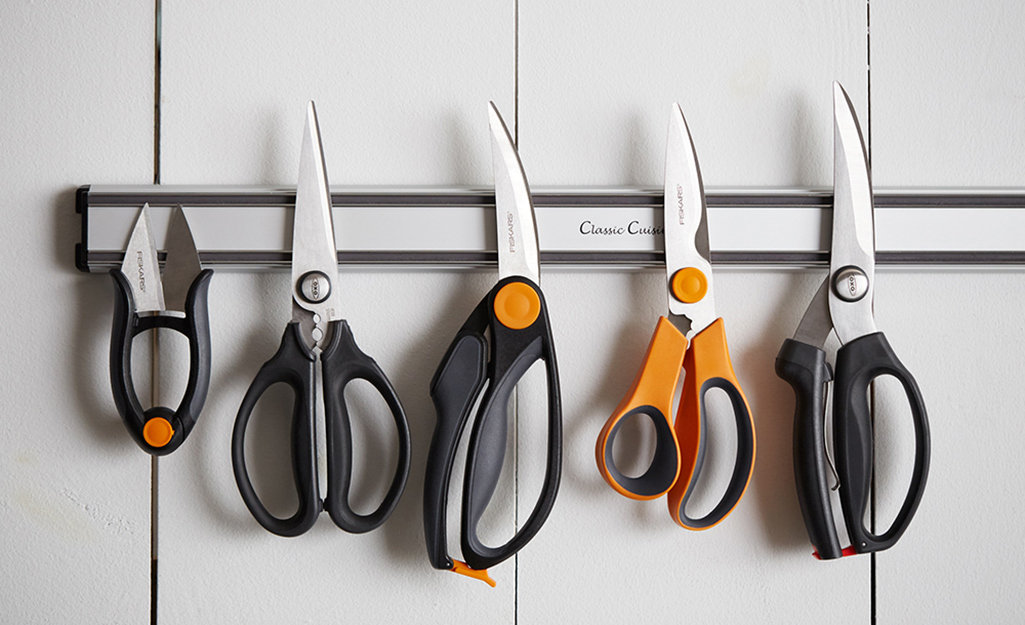
Look at the low fulcrum of kitchen shears. For a quality pair, the fulcrum should be strong and balanced. You can test this by placing a pair on your pointer and middle fingers. Place the tips of your fingers in the handle holes. If they don't waver, you've got a good pair. If they are unsteady, keep looking.
The absence of strong balance implies the handles may be flimsy. The flimsier they are, the more likely they are to break. A strong low fulcrum will give you more leverage and increase their effectiveness.
The best shears have an adjustable pivot screw. This feature is meant to extend the lifespan of a pair of shears. Without it, the pivot point can grow loose after too many bouts of exertion. This feature also aids in easier cleaning and sharpening.
While angling for a pair that comes apart, you want a single dismantling point. The best kitchen shears will have a single-piece blade and handle. This is to prevent the handles from breaking or twisting off.
Kitchen Shear Materials
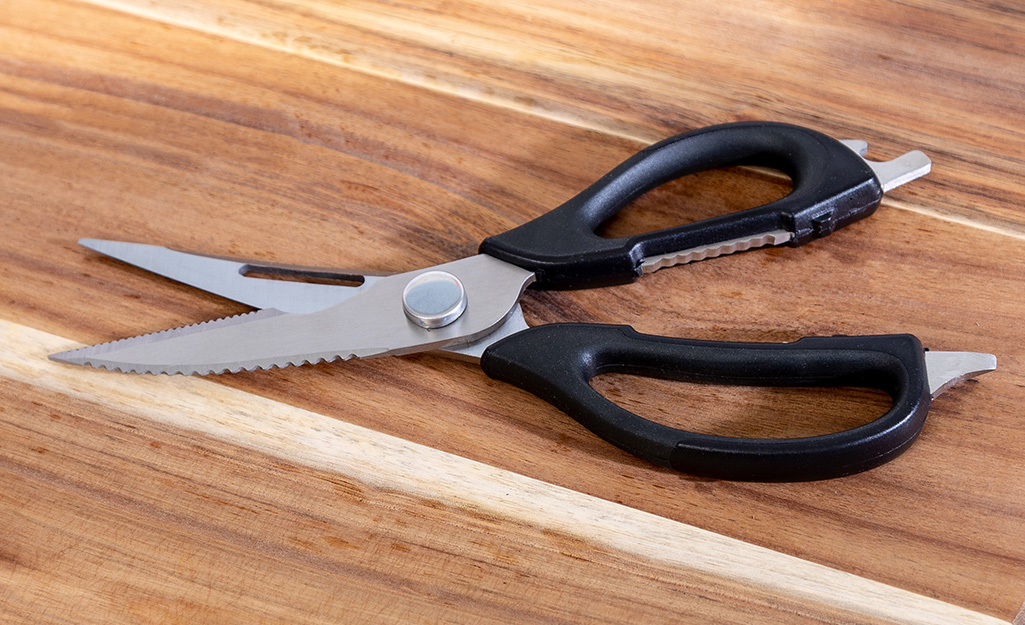
As is the case with any kitchenware, material is extremely important. The best kitchen shears are made of carbon steel. This gives you a blade that is sturdier and easier to sharpen. You won’t get the luster you expect from stainless steel with a carbon steel option. But that’s an aesthetic feature you can do without when it comes to kitchen shears. Since carbon does rust and some do covet that shine, manufacturers have innovated. There are special stainless steels to mirror the sharpness retention of carbon steel. These are a fairly pricey option, however.
Different sorts of kitchen shears have different blade textures. For your standard set, we recommend a serration on one of the edges. This allows for better gripping.
Kitchen Shear Handles
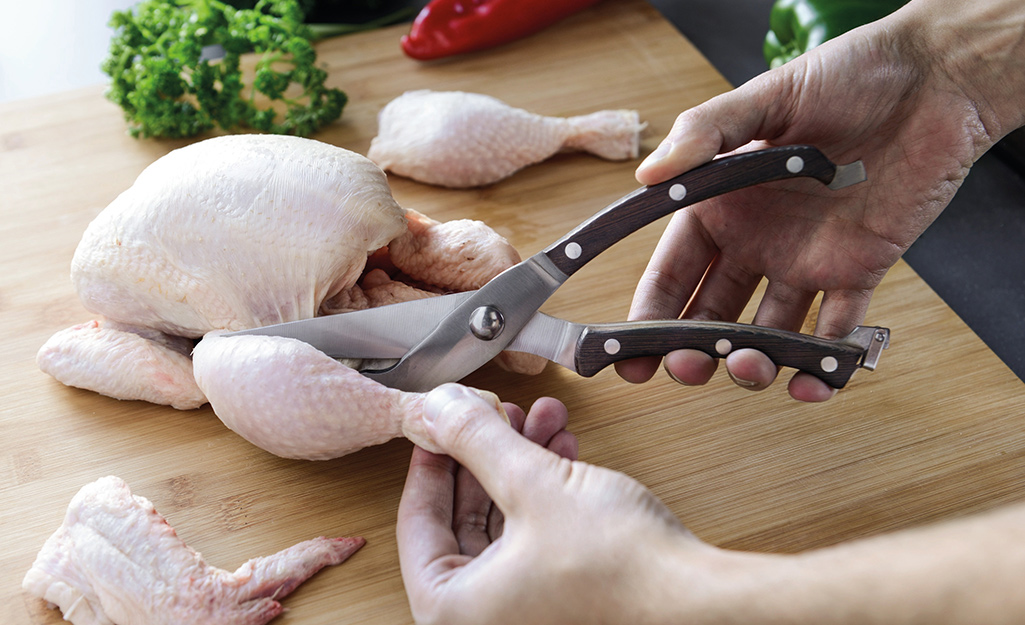
Find a pair with comfortable handles. If handles make your fingers ache, you won’t use the shears as often. Kitchen shears with a slightly padded grip will be more comfortable. The pads will help you grip with greater certainty, especially with tough things.
Handles that are sized appropriately are important, too. Many of the best kitchen shears are made with hand size in mind. Find a pair that fits your hand and allows for plenty of room around your fingers. This is in case you need to stick two hands into one handle. Sometimes that is required to manage cutting hard materials.
Make sure your pair’s handles are non-slip material or are made of grip-patterned plastic. Are you or someone in your household a lefty? If so, make sure to get a set that is designed for ambidextrous use.
Subcategories of Kitchen Shears and Scissors
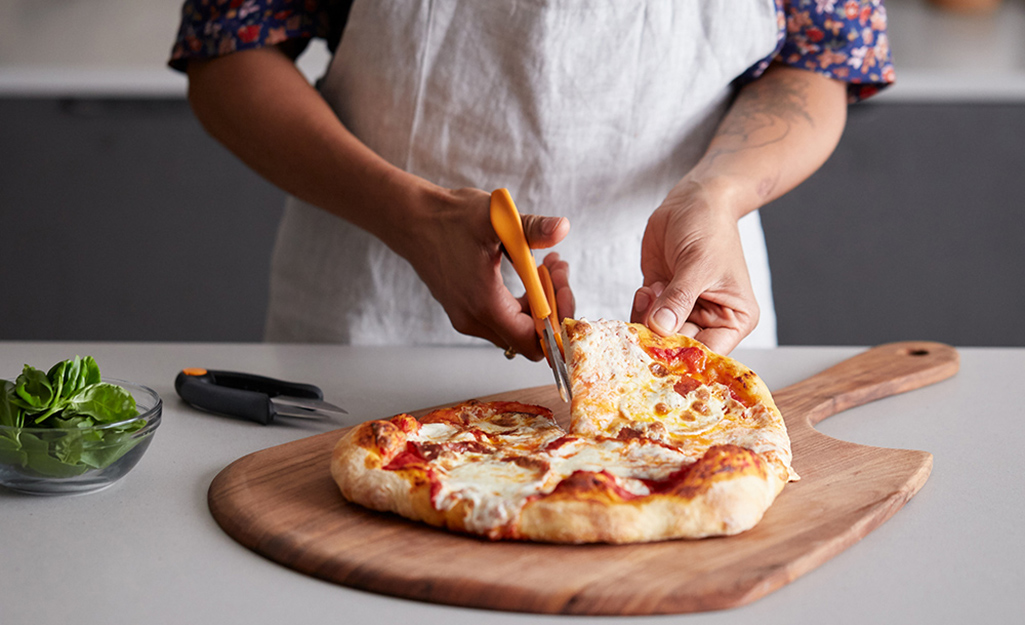
A standard multipurpose pair works for many. But an avid home cook can arm themselves with shears made with certain tasks in mind. Here are categories of shears that deserve a kitchen spot:
- Herb scissors: These are sometimes referred to as kitchen snips. They are generally 4 to 5 inches long. They have a rivet closer to the blade to help exert optimum force. Herb scissors often come with four to six layered blades. The blades and rivet allow you to quickly cut through big clumps of herbs with ease. This is vital when you’re handling herbs because of their tendency to bruise. This tool will power right through any reed-thin substance. These sometimes come with a spring-loaded hinge that makes cutting extra snappy.
- Poultry shears: Love your big birds for dinner? These are a necessity for anyone who is regularly spatchcoking. Some standard shears can handle cracking the backbone of a smaller bird. But these are designed to give you optimal leverage and sharpness. Poultry shears are also great for masterfully trimming fat and skin. Using a pair of shears is much safer than opting for a knife, which can slip around skin. The blades are also curved and tapered. This is to help you access tough-to-reach spots around joints.
- Meat scissors: These are similar to kitchen shears but possess the traits of scissors. They stand up to pieces of raw meat and make for easy portioning. No cutting board required.
- Seafood scissors: These are designed with small, curved blades. They are especially adept at removing seafood shells. without damaging the meat inside. These are your go-to tools when cooking lobster, shrimp or crab.
- Pizza scissors: You can portion out a pizza with a traditional slicer. Pizza shears help get you through the crisp crust. Standard kitchen shears can be used to accomplish this. But you can now find pizza shears that have a bottom blade outfitted with a flat plastic base. The base snuggles under the pizza, ensuring an even snip. It even helps pick up a piece after it is cut. It's a great assist for handling molten cheese.
Cleaning Kitchen Shears
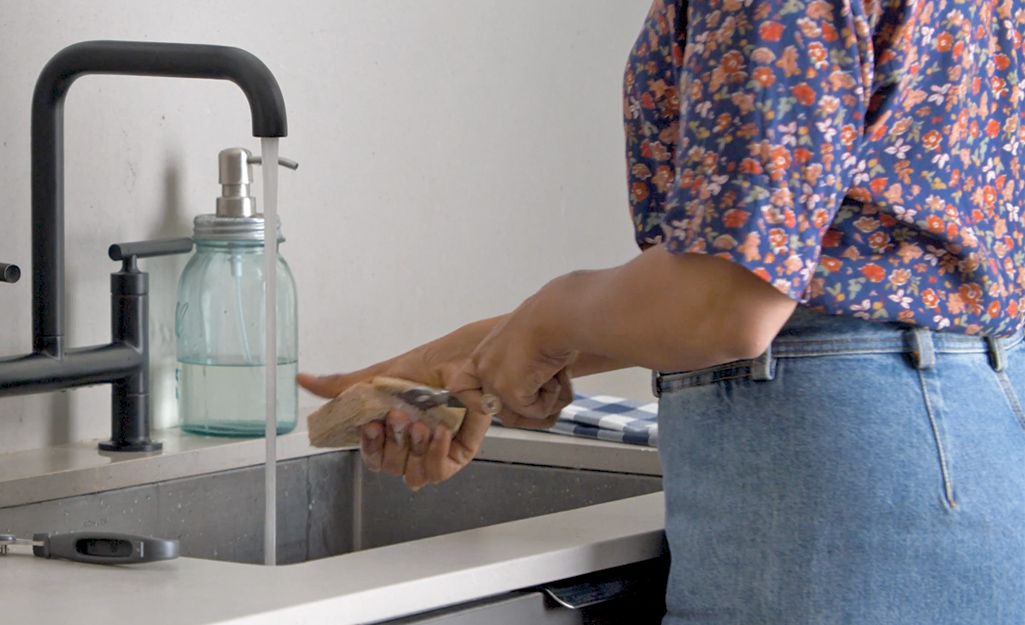
When it comes to keeping your kitchen shears in shape, we recommend hand-washing. This will keep the blades sharp and resistant to rust. If you have a pair made of carbon, you should oil them occasionally. Rub them with a lightly oiled cloth. Oiling the screw, too, will keep them pivoting smoothly. Any food-safe oil (olive, canola, grapeseed, etc) works.
Sharpening Kitchen Shears
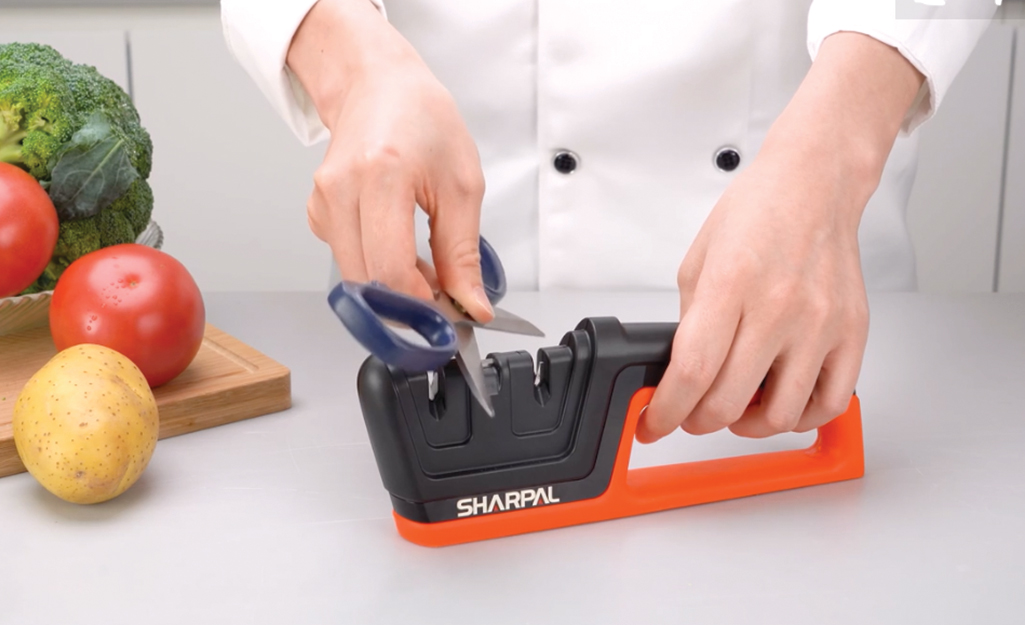
Not only do you need to be mindful of keeping your kitchen shears clean, you also need to know how to sharpen them. If your pair has non-serrated blades, you can use a whetstone, honing steel rod or a more advanced knife sharpening tool. Just pull the blades apart at the joint. Your blades don’t come apart? Try sharpening by cutting a piece of aluminum. It’s an impressive hack!
Take 12 inches of aluminum foil. Fold it over several times so it's six layers thick. Cut the foil into 10 or 12 strips. Test the sharpness of the blade as you go by cutting some paper. Once the shears are cutting better, rinse and dry them. This eliminates any remaining paper and aluminum bits.
For blades with serrated edges, you may need to turn to a professional. Each serration needs individual care. This is a task that can be done with an awl-like tool, but it requires lots of effort, time and precision. Many kitchen supply stores, hardware stores and even farmers markets offer this service.
Follow these tips and you’re sure to have the best kitchen shears on hand. Keep them sharp and at the ready day in and day out and watch them cut down your kitchen prep time in a flash. Looking for kitchen shears to complete your kitchen? The Home Depot delivers online orders when and where you need them.





